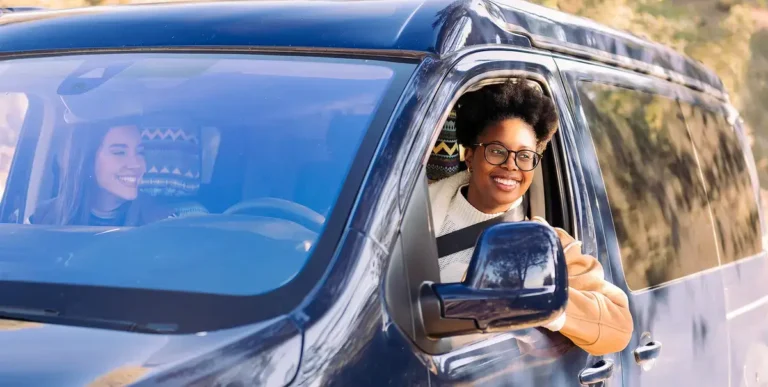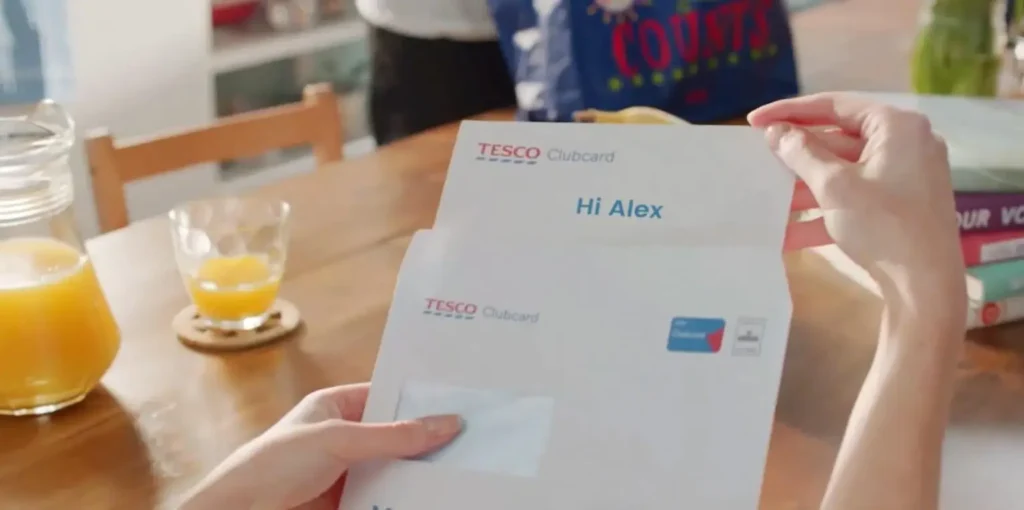Insurance companies, along with other financial services industries, have wrestled with two important questions in recent years: How do we attract new customers and keep them engaged, and how do we stay competitive in our market?
Our answer to these questions? Hyper-personalization. Personalized messaging can help insurance companies reach younger audiences, improve customer engagement and stay ahead of the competition.
What is Hyper-Personalization?
Hyper-personalization is a form of personalization that leverages data and often artificial intelligence (AI) to deliver highly customized experiences to individuals.
Unlike traditional personalization, which might involve simply addressing a customer by their name in an email, hyper-personalization goes several steps further. It involves analyzing a vast array of data points — from customer behavior and preferences to things like transactional history and social media activity — to create experiences uniquely tailored to each individual.
Hyper-personalization is all about understanding customers on a deeper level and anticipating their needs even before they articulate them. With these efforts, companies can deliver more tailored experiences and build a stronger customer journey and develop ongoing relationships.
Hyper-personalized messaging is transforming various industries, including retail, banking and notably, insurance.
What Does Hyper-Personalization in Insurance Look Like?
The rise in AI and hyper-personalized messaging isn’t new to the insurance industry, where companies have been transforming from being purely transactional to being more personal for years.
This is mainly because insurance companies are wanting to target younger audiences, and personalized marketing and outreach is one way to do this.
- According to a Gallup poll, Millennials are nearly 2x more likely than older generations to be “actively disengaged” with their insurance provider.
- Younger generations love video. 70% of Gen Z and 64% of millennials use YouTube for financial information.
- For the first time in over 14 years, people now say they prefer to research and buy life insurance online instead of in-person. 66% of people say this is because it’s more convenient.
The continued push to reach younger audiences is noteworthy because not only are engaged insurance customers less sensitive about pricing when selecting an insurance carrier, but they’re also the ones buying insurance. 52% of millennials are now homeowners, while 4.5 million Gen Z members became renters within the last 5 years, more than any other age group. That’s a lot of homeowners and renters insurance to sell!
Ebook

Building customer loyalty, driving engagement and addressing customer needs proactively and creatively is crucial for insurance companies that want to thrive in today’s hyper-personalized world.
Types of Personalization for Insurance Companies
With hyper-personalization, insurance companies can use advanced data analytics and AI to create personalized insurance products, tailor marketing messages and provide individualized customer service.
Customized Products
Insurers can design policies that match the specific needs and preferences of individual customers. For example, a young professional living in a city might receive a different auto insurance offer compared to a retiree in a rural area, taking into account factors like driving habits, vehicle usage and lifestyle.
Dynamic Pricing Models
Using real-time data, insurers can adjust pricing based on individual risk profiles. This might include factors such as driving behavior, health metrics, or even weather conditions, leading to more accurate and fair pricing for each policyholder.
Personalized Communication
Insurance companies can send targeted messages and offers to customers based on their unique profiles. For example, a customer who recently bought a home might receive Personalized Video about home insurance with tailored coverage options and discounts suited to their unique customer profile.
Check out this customized video we made for Farmers Insurance based on information that the customer provided.
And with the advancement of Enterprise AI Video, making customer acquisition videos like these is faster and easier than ever. AI handles everything from storyboarding and scripting to post-production.
Proactive Customer Service
With access to comprehensive customer data, insurers can anticipate issues and reach out proactively.
For instance, if data suggests a customer is at risk of canceling their policy, they might get an automated email from a customer service representative with a personalized retention offer.
Examples of Personalized Customer Experiences in Insurance
Many insurance companies are already leveraging hyper-personalization to enhance customer interactions, improve the claims process and drive business growth. Some use AI, some don’t, but all focus on an excellent CX.
Here are some examples for inspiration.
John Hancock Vitality
John Hancock Vitality is a data-driven program that personalizes life insurance policies based on the health and wellness activities of policyholders.
By integrating wearables and health apps, John Hancock collects data on customers’ physical activities, diet and overall health. In return, customers receive rewards such as premium discounts, gift cards and even travel discounts for maintaining a healthy lifestyle.
This not only encourages healthier living but also aligns policy costs with the actual risk, benefiting both the insurer and the insured.
Here’s a video about how John Hancock Vitality works.
Progressive’s Snapshot Program
Progressive’s Snapshot program is a leading example of hyper-personalization in auto insurance. By installing a small device in their vehicles or using a mobile app, customers allow Progressive to track their driving behavior, including speed, braking and the time of day they drive.
Using this data and their own algorithms, Progressive then offers personalized discounts and rates that reflect the individual risk of each driver.
AAA’s Renewal Videos
Renewals are an important time for insurance companies because this is when their customers either continue with their company or shop around for a new provider. Personalized Videos can make this conversation much more human and relevant.
For example, AAA sent renewal videos to their customers that shared specific information about their current policy, their renewal date and premium and next steps they can take advantage of.
With this hyper–personalized approach, the video not only reminds customers personally how AAA appreciates their business. It also encourages them to opt in for additional programs and upfront payments to get even more value out of their policy.
Drivewise From Allstate
Similar to Progressive’s Snapshot, Drivewise uses telematics to gather data on driving behavior and make their underwriting hyper-specific. Customers who enroll in the program receive personalized feedback on their driving habits and can earn rewards for safe driving.
The video below explains how it works.
The Benefits of Personalized Messaging for Insurance Companies
Hyper-personalization has lots of benefits for insurance companies, from assisting with onboarding to making policy renewals or cross-sells and breeze. Here are some key benefits.
Improved Customer Engagement
Personalized messaging ensures that communications are relevant and valuable to each customer. When customers receive offers and information that resonate with their specific needs and preferences, they are more likely to engage with the insurer.
For example, we’ve helped some insurance leaders get 5x more engagement with Personalized Video.
Higher Customer Retention
By providing personalized experiences, insurers can build stronger relationships with their customers and in such a highly-competitive market, this is crucial. When customers feel understood and valued, they are less likely to switch to competitors.
Personalized retention strategies, such as targeted offers and proactive customer service, can significantly reduce churn rates.
Post on
Enhanced Customer Loyalty
Personalization fosters loyalty by consistently meeting and exceeding customer expectations.
Customers who experience personalized service are more likely to develop a sense of trust and loyalty towards their insurer, leading to long-term relationships, continued policy renewal, cross sells and referrals.
Increased Sales and Revenue
Personalized marketing messages are a powerful sales tool. When customers receive tailored recommendations based on their individual profiles, they are more likely to make a purchase.
Our insurance clients that have implemented Personalized Video have seen powerful results, including an 8x increase in sales.
Improved Onboarding Experiences
Hyper-personalization can significantly enhance the onboarding process for new insurance by creating an engaging, efficient and tailored experience.
Using AI and data analytics, insurers can create personalized onboarding messages that cater specifically to each customer interaction.
Check out this personalized onboarding video we made for Highmark Health.
Tips for Getting Started With Hyper-Personalization
Insurtech, or technology used to improve the insurance industry, has come a long way in recent years. Because of this, getting started with hyper-personalization isn’t as complicated as you might think.
Invest in Data Analytics and AI
Data is the foundation of hyper-personalization. Insurance companies need to invest in robust data analytics and AI capabilities to collect, process and analyze vast amounts of customer data. This includes integrating data sources such as customer interactions, social media and more.
Implement Advanced CRM Systems
Customer relationship management (CRM) systems play a crucial role in hyper-personalization. Advanced CRM systems with AI capabilities can automate personalized messaging, track customer interactions and provide actionable insights.
Not only does having advanced CRM data help insurance companies deliver timely and relevant communications to each customer, but it’s also the gateway to personalizing video, one of the most powerful communication channels, at scale. Our Next Generation Video Platform can take the data from your CRM system and create Personalized Videos for onboarding, cross selling and policy renewals quickly and efficiently.
Prioritize Data Privacy and Security
With the increased use of customer data, ensuring data privacy and security is crucial. Insurance companies must comply with regulations and implement robust data protection measures.
We’re ISO 27001 certified and SOC 2 Type 2 compliant, and we continually update our credentials and undergo rigorous testing to meet the latest security standards.
Hyper-Personalization for Insurance Companies
In an age when people expect personalized customer experiences, especially from financial services companies, there’s never been a better time to get started.
At Idomoo, we make it simple for companies to create Personalized Videos at scale leveraging AI so you can generate them at a fraction of the time and cost.
To get started, click the button below to schedule a call. We’d love to show you how it works.






